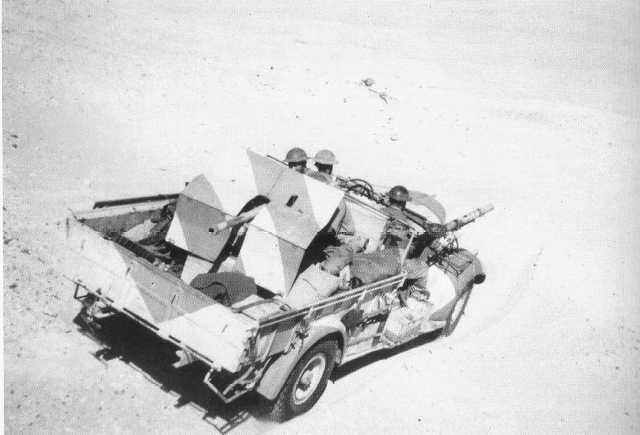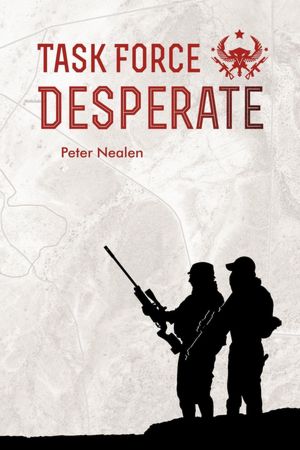Just as I did with
Killer Instincts, I want to dedicate a blog post to all the firearms that show up in
Operation: Arrowhead. Rather than break it up into multiple posts, I'm just going to do one big post, so bear with me...
British Commandos
The most prominent weapon in the book is the Thompson 1928 submachine gun. As the book is set early in the war, the version of the Thompson is the basic 1928 model, with the vertical foregrip, compensator, and so forth. However, unlike the picture shown here, the characters all use 20-round magazines, as the drum mags were found to be unreliable, especially in battlefield conditions.
The other primary weapon carried by the Commandos is the SMLE, or Short Magazine Lee Enfield .303 caliber rifle. The Lee Enfield goes through multiple variations over the course of the war, but during 1941 the most likely variant would be the No. 1 MK III, as that was the pattern of rifle carried by most Commando units at the time of the Lotofen and Vaagso raids. The SMLE was a robust, reliable rifle with a ten-round magazine and would serve the British well in one variant or another throughout the war.

The Bren .303 caliber light machine gun was a common infantry support weapon throughout the war, serving the same purpose as the American BAR, both of which operating in a similar vein as the M249 SAW in the modern US military - that of the squad-level support weapon. In a typical Commando squad, one man would carry the Bren, another would serve as loader and assistant and carry spare ammunition as well as a spare barrel and tools, and each member of the squad would carry a couple of loaded Bren magazines in their kit.
The squad's sniper, Rhys Bowen, carries the Enfield Pattern 1914 .303 caliber rifle. This was an American manufactured rifle during the Great War, and saw use alongside the SMLE, although in much smaller numbers. It is generally considered a much better designed rifle and valued for its accuracy, but its cost to manufacture was too high for it to be a front-line weapon. In both the First and Second World Wars, it often found itself put to use as a sniper rifle.

Lieutenant Price comes from a respectable English family, and one of his relatives is a high-ranking officer in the Royal Navy. Because of this, he is able to get his hands on, and uses throughout the mission, a prototype Lanchester submachine gun. This is a high-quality British clone of the German MP28 submachine gun, itself a redesign of the MP18, one of the earliest battlefield SMGs. The Lanchester is extremely well-made, with a machined brass receiver and other quality parts. Interestingly, the Lanchester used a 50-round magazine, quite a high capacity for weapons of that (or even this) era, although it could use the later-designed 32-round Sten magazines.

Each Commando carries a sidearm during the mission, and for most of them, that sidearm is the .38 caliber Enfield No. 2 MK 1 revolver. This is a break-open revolver that hinges in front of the cylinder, and snaps open vertically like a double-barrel shotgun. Compared to modern ammunition in this same relative size, the .38 caliber loads used in the Enfield revolver are pretty weak, but European handguns for most of the early 20th century were notoriously under-powered compared to what we here in the States would consider a "military grade" handgun cartridge. Even so, the Enfield sees use several times throughout the novel.
The main character, Thomas Lynch, carries a Colt 1903 pocket pistol with him through most of the novel. He originally bought the weapon as a non-regulation backup for his rifle before he shipped over to France with the British Expeditionary Force in 1939. In the prologue, Lynch uses the pistol to kill several Germans, and it reappears near the end of the book...
Sergeant McTeague, the enormous Scotsman, carries a Webley MK Vi .455 caliber revolver. Although this weapon is an older service revolver, it fires a much more authoritative cartridge than the Enfield revolver. Even so, the most powerful issue ammunition in .455 Webley is still underpowered compared to the American .45 ACP. However, it must be noted that the Colt cartridge was built for a whole new generation of firearms, while the Webley is essentially a 19th century pistol that survived into the mid-20th century.
German Troops
The Kar 98K was a shorter-barreled version of the Kar 98 carried by most German forces in World War One. In WW2, it was the standard infantry rifle throughout the war. It was a well-built, reliable design, and although outclassed in terms of firepower by the advanced M1 Garand, the 98K's Mauser action lives on in many American sporting rifles today.
The MP-38 (and its redesigned clone, the MP-40) is carried by various German non-commissioned officers as well as a number of French partisans. One of the most recognizable weapons of WW2, the "Schmeisser" as it was inaccurately called was overall an excellent weapon, the biggest problem being the Germans never had enough of them. The weapon is a prized find for the partisans, as its firepower is a great force multiplier, allowing partisans armed with SMGs to ambush and wipe out much larger numbers of Germans.
The MG-34 was the precursor to the infamous MG-42, and although it had a slightly lower rate of fire (only ~900 RPM), it was definitely more dangerous than the Bren or BAR, able to fire continuous bursts from 75 or 150-round belts. The MG-34 was carried by men and mounted on vehicles, and when the MG-42 replaced it's older sibling in infantry units, the '34 lived on in its vehicular role. Both German and Partisan forces put the MG-34 to use in the novel.
Leutnant Bieber, one of the German officers encountered in the novel, carries a P38 9mm automatic as his personal sidearm. As the Luger was by this time several decades old, and an extremely expensive pistol to manufacture, the cheaper P38 was the official issued sidearm of the German army by this point.
Hauptmann Krieger carries a Browning Hi-Power P35, a Belgian-manufactured high-capacity 9mm pistol. This was originally an Allied weapon, but when Belgium was captured by the Germans, the pistols were issued to the Germans as well as the P38 (although FN, the arms manufacturer, moved to Canada and the Canadians used them during the war). It is a formidable pistol, with a 13-round magazine capacity.

The Mauser C96 was a near-antique by the Second World War, but like the Luger, it soldiered on in the possession of officers and other units, particularly the SS. The 7.63x25mm Mauser cartridge is actually fairly powerful by European pistols standards, with a high muzzle velocity and flat trajectory. This, coupled with the weapon's long barrel and excellent sights, was one of the reasons the pistol was typically carried with a wooden holster/attachable stock, converting the pistol into a type of pseudo-carbine for long-ranged shooting. In the novel, the C96 appears at the very end, on the hip of the SS partisan hunter Johann Faust.
French Partisans
Rene Chenot and several other partisans start the novel carrying French military MAS-36 rifles. This was the newest (and last) bolt-action rifle to enter military service, and although it has a somewhat inelegant appearance, is reported to be a fairly sturdy rifle, certainly handier-looking than a long Lebel rifle or a full-sized Mauser 98.
The Lebel Model 1886 is a fascinating weapon. This is the first military rifle to fire a smokeless cartridge, the 8mm Lebel round. The rifle has a capacity of 8 rounds in a tube magazine below the barrel, which gives it a nice capacity but means the weapon must be reloaded with individual rounds, rather than using chargers or stripper clips. Interestingly, one of the standard military cartridge loads for the Lebel uses a bullet machined out of
solid brass, which I think is pretty cool but so at odds with mid-20th century wartime production. The brass bullet was also the first to use a "spitzer boat-tail" design, giving it that classic rifle bullet look, meaning the Lebel had not one but two innovations that went on to become universal standards in military firearms. The Lebel was the standard French rifle of WW1, and there were no doubt plenty kicking around 20 years later. Several partisans, including
Monsieur Souliere, carry Lebel rifles in the book.
The Berthier carbine and rifle were slightly younger contemporaries of the Lebel rifle, chambering the same 8mm Lebel round, but using an integral box magazine rather than the Lebel's tube. Several partisans are noted to be carrying Berthier rifles when first encountered by the Commandos.
The French MAB Model D .32 ACP pistol was a military and police pistol manufactured starting in the 1930s. It has a 9-round magazine, and operates in a similar manner to the Browning .32 shown above. In the novel, this pistol is carried by Andre Bouchard, the infamous partisan leader known as "Butcher of Calais" for his execution of German soldiers. The MAB pistol was how he delivered his
coup de grace after his favored tactic of machine-gunning the enemy across the legs with a captured MP-38.
And that is the full tally of all the firearms that appear in the novel! It's quite the list, and I don't think I've missed anything. There will be a few new entries for the second book,
Operation: Bedlam, so I'll write a follow-up post when that book is published.























_-_AM.032056.jpg)
























